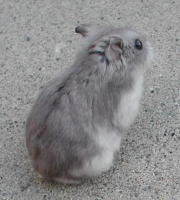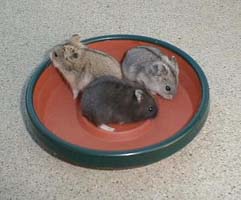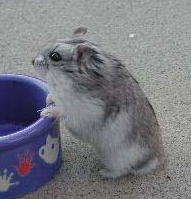
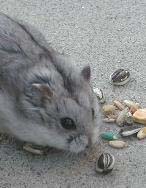
The Dark Gray gene in the Campbells was found in 2001 in United States pet store animals. There had been rumors of the gene (generally referred to at the “chinchilla gene”), so the gene may have been discovered before this time.
Description
The Dark Gray gene leaves the black color pigment in the coat but removes all yellow pigment. Dark Grays are a chinchilla-like color, so testing was done to Albinos to determine whether the gene was indeed the chinchilla gene seen in other species, a gene which is known to be on the c-locus. Mating to two independent lines of albinos produced nothing but normal color Campbells, and it was concluded that this was not the chinchilla gene known in other species. It was given the name “Dark Gray” because it closely resembles the Dark Gray Syrian gene.
There is no known standard for this gene.
The Dark Gray gene can be combined with all other color, pattern, and coat type genes available in the Campbells dwarf hamster. Combining dark gray with black is discouraged, though, because of the nature of the gene. The dark gray gene does not affect black pigment making a black Campbells or a combined dark gray and black hamster very similar in appearance. With the variation already seen in Black Campbells and the challenge of keeping the Black Campbells as dark as possible, mixing Dark Gray with Black might reduce the quality of black in the animals.
Breeding
Dark Gray is a simple recessive gene (l). In order for a hamster to be dark gray, it must inherit the gene from both parents. Two dark gray hamsters, when bred together, will produce a litter of all dark gray pups (or combination colors including dark gray). A dark gray bred to a non dark gray (who does not carry dark gray) will produce a litter of non dark gray pups, however they will all carry the dark gray gene. If those pups are in turn bred to each other, to other dark gray carriers, or to a dark gray, they will produce dark gray offspring. Thus it is very easy to combine dark gray with any other color, pattern, or coat type.
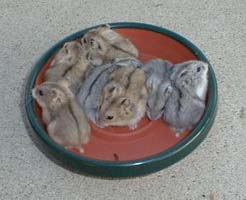
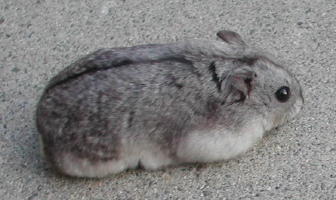
Dark Gray Campbells can be shown in the Unstandardized class at shows. In this class, color and markings are not scored, so the hamster’s score will consist of all other categories (type, fur, size, condition, and eyes and ears).
Dark gray is a good choice for an exhibitor that wants to concentrate on type and fur without worrying about color and markings. Once an exhibitor has gained some experience with improving type, fur, and the other categories, though, they will probably want to move to one of the standardized colors so that they can compete for Best in Show. Only then will they have the added challenge of perfecting color and markings in addition to type, fur, and the other categories.
Dark Gray Combination Colors
Dark Gray can be combined with any other color, pattern, or coat type genes. Black and albino are the least productive to combine dark gray with. Albino will remove all pigment leaving no trace of dark gray in the coat. And because dark gray does not affect black pigment, combining black and dark gray does not produce a distinct combined color.
Dark Gray combined with genes like opal and argente, though, does produce distinctive colors which some breeders may choose to breed. None of these colors has been names, so the name used here is just a combination of the known gene names with dark gray.
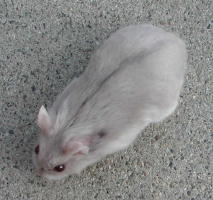
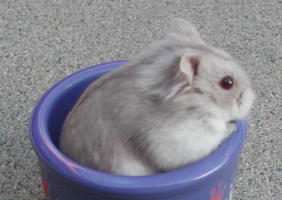
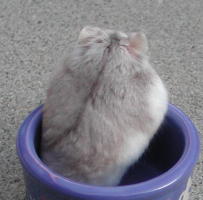
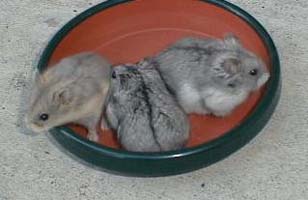
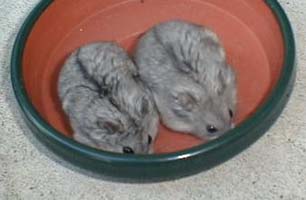
and Dark Gray Opal (right)
